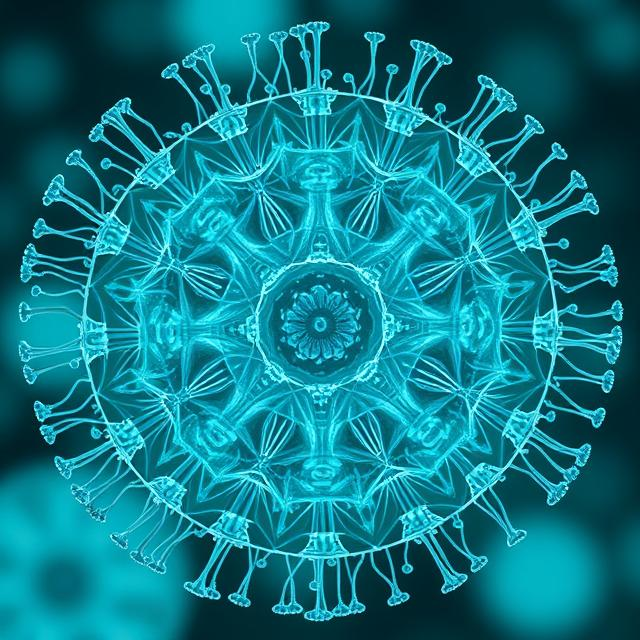Gene therapy stands at the forefront of modern medicine, offering unprecedented opportunities to treat and potentially cure a myriad of diseases by addressing their genetic foundations. This innovative approach involves the manipulation of genetic material within a patient’s cells to correct malfunctioning genes, introduce new genes, or modify gene expression. As research progresses, gene therapy holds the promise of transforming healthcare by providing solutions to previously untreatable conditions.
Understanding Gene Therapy
At its core, gene therapy seeks to rectify genetic disorders by introducing, removing, or altering genetic material within a patient’s cells. This can be achieved through various mechanisms:
Gene Addition: Introducing a functional copy of a gene to compensate for a defective or missing one.
Gene Correction: Repairing a mutated gene to restore its normal function.
Gene Silencing: Deactivating or suppressing the expression of a malfunctioning gene.
Gene Editing: Precisely altering the DNA sequence within a gene using technologies like CRISPR-Cas9.
These strategies aim to address the root causes of diseases at the molecular level, offering potential cures rather than merely managing symptoms.
Historical Milestones in Gene Therapy

The concept of gene therapy emerged in the latter half of the 20th century, with significant milestones marking its evolution:
1972: The term “gene therapy” was first introduced, proposing the idea of treating genetic disorders by correcting defective genes.
1990: The first approved gene therapy clinical trial was conducted, targeting a young patient with severe combined immunodeficiency (SCID).
2003: China approved Gendicine, the first commercial gene therapy product, for the treatment of head and neck squamous cell carcinoma.
2017: The U.S. Food and Drug Administration (FDA) approved Kymriah, a gene therapy for certain types of leukemia, marking a significant advancement in the field.
These milestones underscore the progression from theoretical concepts to practical applications, highlighting the growing impact of gene therapy in medicine.
Current Applications of Gene Therapy
Gene therapy has shown promise across various medical domains, including:
- Inherited Genetic Disorders
Conditions such as cystic fibrosis, hemophilia, and muscular dystrophy result from specific genetic mutations. Gene therapy aims to correct or replace the faulty genes responsible for these disorders, offering potential cures. For instance, therapies targeting the CFTR gene have been developed to address the underlying cause of cystic fibrosis. - Cancer Treatment
Gene therapy strategies in oncology involve introducing genes into cancer cells to induce cell death, enhance the immune response against tumors, or make cancer cells more susceptible to other treatments. CAR-T cell therapy, for example, involves modifying a patient’s T-cells to recognize and attack cancer cells more effectively. - Neurological Disorders
Neurogenetic diseases like spinal muscular atrophy (SMA) have seen breakthroughs with gene therapy. The approval of therapies such as Zolgensma, which delivers a functional copy of the SMN1 gene, has provided new hope for patients with SMA. - Cardiovascular Diseases
Gene therapy is being explored to treat heart diseases by promoting the growth of new blood vessels, repairing damaged heart tissues, or regulating genes involved in cholesterol metabolism. For example, researchers are investigating the use of gene therapy to introduce genes that encode for angiogenic factors, stimulating the formation of new blood vessels in ischemic heart conditions.
Gene Therapy Platforms and Delivery Methods
The success of gene therapy heavily relies on the development of efficient delivery systems to transport genetic material into target cells. Two primary platforms have been utilized:
- Viral Vectors
Viruses, due to their natural ability to deliver genetic material into cells, have been engineered to serve as carriers (vectors) for therapeutic genes. Common viral vectors include:
Adeno-Associated Viruses (AAVs): Widely used due to their low pathogenicity and ability to infect both dividing and non-dividing cells.
Lentiviruses: Capable of integrating genetic material into the host genome, making them suitable for long-term gene expression.
These vectors have been instrumental in delivering genes for various therapies, including those targeting retinal diseases and certain types of cancer.
- Non-Viral Methods
To overcome limitations associated with viral vectors, non-viral delivery methods have been developed, such as:
Liposomes and Nanoparticles: Synthetic carriers that encapsulate genetic material, facilitating its entry into target cells.
Electroporation: A technique that uses electrical pulses to create temporary pores in cell membranes, allowing genetic material to enter.
These methods offer advantages in terms of safety and scalability, although challenges remain in achieving efficient and targeted delivery.
Advances in Gene Editing Technologies
The advent of precise gene editing tools has revolutionized gene therapy, enabling targeted modifications with greater accuracy. Key technologies include:
- CRISPR-Cas9
This groundbreaking tool allows for specific editing of DNA sequences, facilitating the correction of genetic mutations. Its versatility and efficiency have made it a cornerstone in gene therapy research. For example, CRISPR-Cas9 has been employed to correct mutations responsible for sickle cell disease in preclinical models. - Base Editing
An evolution of CRISPR technology, base editing enables the direct conversion of one DNA base pair to another without inducing double-stranded breaks, reducing the risk of unintended mutations. This approach has been utilized to correct point mutations associated with various genetic disorders. - Prime Editing
This method allows for the insertion, deletion, or replacement of DNA segments at specific locations within the genome, offering a versatile and precise approach to gene correction. Prime editing holds the potential to address a wide range of genetic mutations, including those that traditional gene editing techniques struggle to target. By combining a catalytically impaired Cas9 with a reverse transcriptase and a specialized RNA template, prime editing enables highly specific modifications—without causing double-strand breaks. This makes it particularly promising for diseases involving complex mutations or regions of the genome that are otherwise difficult to access.
Gene Therapy: A Look Ahead
As the field of gene therapy matures, the horizon promises a wave of transformative treatments that go beyond rare diseases and into the mainstream. This second part explores the challenges, ethical concerns, regulatory landscape, and the exciting future of gene therapy as it integrates with other emerging technologies.
Challenges in Gene Therapy
Despite its promise, gene therapy faces a variety of scientific and logistical hurdles:
- Immune Response: One of the biggest obstacles is the immune system’s reaction to viral vectors. For example, AAVs, while popular, can trigger an immune response that destroys treated cells or neutralizes the vector before it reaches the target.
- Off-target Effects: Even with CRISPR-Cas9, the risk of editing unintended regions of DNA poses safety concerns. These errors could potentially activate oncogenes or disable tumor suppressor genes.
- Scalability and Manufacturing: Producing high-quality viral vectors at scale remains expensive and technically challenging. Companies like uniQure and Bluebird Bio have made significant strides, but the industry still struggles to meet demand.
- Access and Affordability: Treatments like Zolgensma cost over $2 million per dose, sparking global debate about how to price life-saving medicine.
Ethical Considerations and Public Perception
Gene therapy does not exist in a vacuum. Its advancement raises important ethical and societal questions:
- Germline Editing: Editing embryos to eliminate inherited diseases remains highly controversial. The possibility of “designer babies” looms large in public discourse.
- Equity in Access: Will these therapies only be available to the wealthy, or can healthcare systems adapt to make them accessible to broader populations?
- Dual-use Concerns: Technologies designed for healing could potentially be misused in bioweapons or unethical human enhancements.
A Nature article stressed the importance of balancing innovation with careful public oversight and international consensus.
The Regulatory Landscape
Regulatory agencies like the FDA and EMA are evolving in real-time to keep pace with gene therapy breakthroughs. Some notable aspects:
- Accelerated Approvals: Recognizing the urgency for patients with rare, life-threatening diseases, regulators have introduced fast-track designations and priority reviews.
- Long-term Monitoring: Patients treated with gene therapy are often monitored for years post-treatment to track efficacy and adverse effects.
- Global Coordination: Initiatives like the International Council for Harmonisation (ICH) aim to align regulatory frameworks across countries to streamline therapy development.
Integration with Other Technologies
Gene therapy does not develop in isolation. Its synergy with other fields is accelerating innovation:
- Artificial Intelligence (AI): Platforms like Kapoose Creek Bio use AI to analyze phenotypic data from gene-modified cells, speeding up drug discovery.
- Synthetic Biology: Companies like Senti Bio use genetic logic circuits to program cells to respond intelligently to disease markers.
- Nanotechnology: Advanced nanoparticles are being designed to deliver genes more safely and efficiently, reducing reliance on viral vectors.
- mRNA Therapeutics: While not gene therapy per se, mRNA technologies (as popularized by COVID-19 vaccines) open the door to transient gene expression platforms that could complement permanent gene fixes.
Gene Therapy for Common Diseases
Initially focused on rare monogenic disorders, gene therapy is now being investigated for more widespread conditions:
- Heart Disease: BioWorld recently highlighted promising results from TLT-101, a gene therapy candidate reversing heart failure in animal models.
- Diabetes: Researchers are exploring gene editing approaches to regenerate insulin-producing beta cells in Type 1 diabetics.
- Neurodegenerative Disorders: Diseases like Parkinson’s and Alzheimer’s are targets for gene therapies that deliver neuroprotective factors or silence toxic genes.
- Ophthalmology: Treatments for inherited retinal diseases, such as Luxturna, are now FDA-approved, showing the real-world impact of gene therapy.
Investment and Industry Trends
Gene therapy is not only a scientific revolution but also an economic engine. Analysts predict the global gene therapy market could surpass $25 billion by 2027.
Key industry movements:
- Big Pharma Partnerships: Companies like Pfizer and Roche have entered the space via acquisitions and strategic collaborations.
- Academic-Industry Pipelines: Leading institutions like Nationwide Children’s Hospital have played a critical role in translating academic discoveries into commercial therapies.
- Startups and Biotechs: New companies are emerging with focused pipelines in rare disease, oncology, and regenerative medicine.
The Road Ahead
The future of gene therapy hinges on solving key technical issues, improving delivery, and ensuring ethical and equitable deployment. Exciting frontiers include:
- In Vivo Gene Editing: Direct delivery of gene-editing machinery into the body could eliminate the need for ex vivo cell manipulation.
- Universal Vectors: Efforts are underway to engineer vectors that evade the immune system and work across multiple tissue types.
- Reversible Gene Therapies: Systems that allow genes to be turned on or off in response to external cues could enhance safety.
- Combination Therapies: Gene therapy combined with small molecules, biologics, or cell therapy may yield synergistic effects.
Conclusion
Gene therapy is redefining what it means to treat disease. From children saved from genetic death sentences to cancer patients given new hope, the impact is profound. But as with all revolutions, it comes with responsibility. A future where genetic diseases are preventable and curable is within reach—if we continue to blend innovation with integrity.
